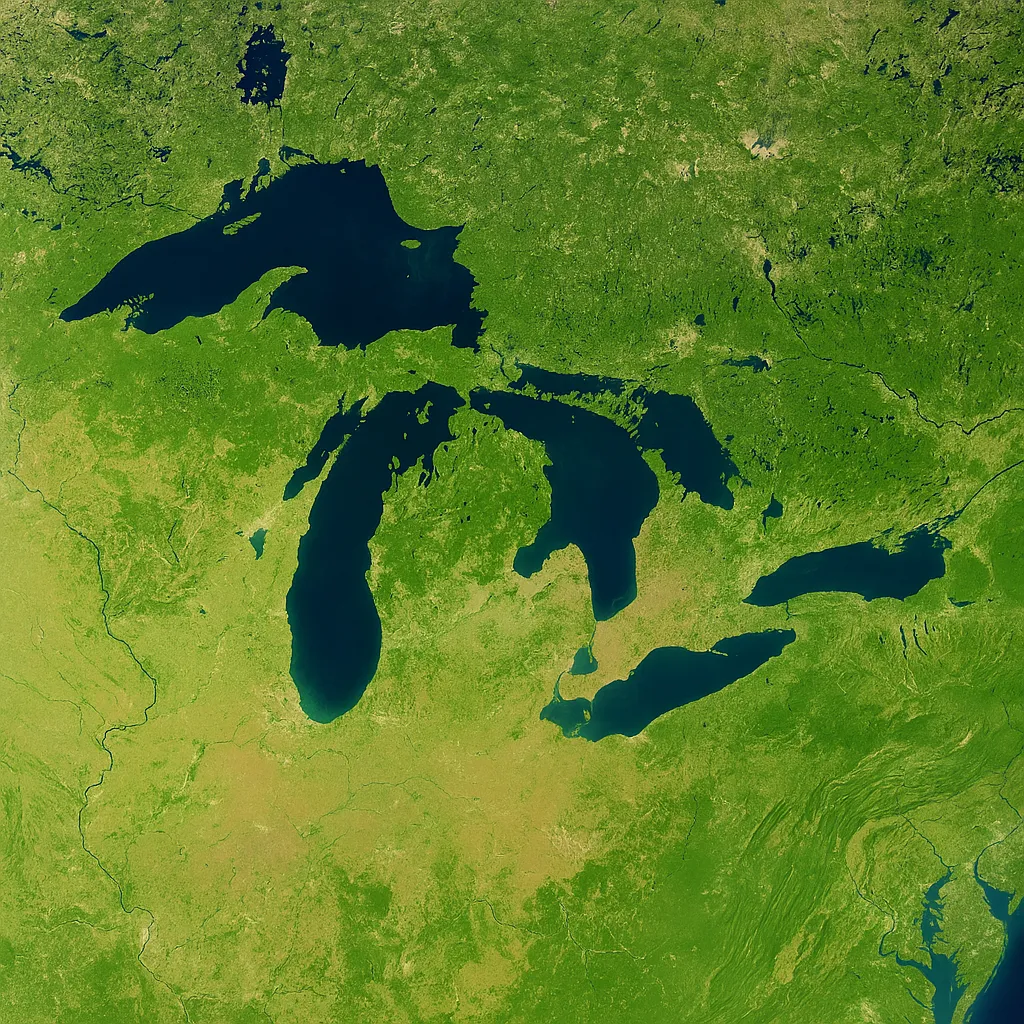The Great Lakes are a system of five vast freshwater lakes located along the border of Canada and the United States. They include Lakes Superior, Huron, Michigan, Erie, and Ontario. Although Lake Michigan lies entirely within the U.S., the entire system plays a vital role in Canada’s ecology, economy, and culture.
The name “Great Lakes” is well deserved: their combined surface area is about 244,000 square kilometers — larger than the entire United Kingdom. Lake Superior is the largest freshwater lake by surface area in the world, covering more land than Austria. Its depth reaches 406 meters, making it one of the deepest lakes on the continent, although Russia’s Lake Baikal is nearly four times deeper.
The volume of water in the Great Lakes is around 22,671 cubic kilometers. That’s about 21% of the world’s surface freshwater supply. If this water were evenly spread across the planet, it would raise global water levels by 1.5 meters.
The lakes are connected by rivers and canals, forming the world’s largest inland navigation system. Over 200 million tons of cargo pass through it annually, making the region strategically vital for trade and industry.
The climate around the Great Lakes is also unique. They generate their own weather phenomena, including the “lake effect” — when cold air over warm water causes heavy snowfall. This is especially noticeable near Lake Erie.
Ecologically, the lakes are home to thousands of species of flora and fauna. However, they face challenges such as pollution, invasive species, and climate change. Canadian and U.S. authorities work together to preserve this extraordinary ecosystem.
The Great Lakes are more than bodies of water. They are a living system that affects millions of lives, shapes climate, drives economies, and enriches cultures. Their scale, records, and natural power make them one of the most awe-inspiring geographic features on Earth.
- Cod Wars
- Traveling to Russia
- About
- Kostroma (Russia)
- Honduras
- Irkutsk
- Vienna Opera Ball
- The Wettest Places on Earth: Where the Sky Almost Never Dries
- In the footsteps of Buratino: tourist spots from the beloved fairy tale and film
- Normandy
- Kangaroo: interesting facts
- The World of Varans
- Born for battle: the world’s most warlike cultures
- Majestic Grand Canyon – Unique Nature of the USA
- Tuareg
- Island
- Unadsdalur Church
- Chile
- Niger
- Turtle facts











